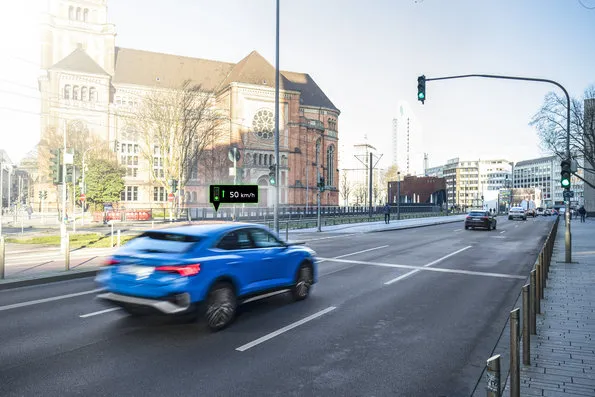The city of Cologne, Germany has installed two CMOS-camera based video pedestrian light systems that will recognise waiting pedestrians and extend the green phase if there are still people crossing after the standard time allocation. The system, implemented by Siemens, uses two Flir cameras. The safe walk camera observes the waiting area. A stereo camera with two CMOS 1/3-inch mono sensors and 3 mm lenses is mounted 3.5 metres above the ground to cover an area of 12 sq m. This camera is set to recognise on
June 11, 2013
Read time: 2 mins
The city of Cologne, Germany has installed two CMOS-camera based video pedestrian light systems that will recognise waiting pedestrians and extend the green phase if there are still people crossing after the standard time allocation.
The system, implemented by189 Siemens, uses two 6778 FLIR cameras. The safe walk camera observes the waiting area. A stereo camera with two CMOS 1/3-inch mono sensors and 3 mm lenses is mounted 3.5 metres above the ground to cover an area of 12 sq m. This camera is set to recognise only objects with a height above 50 cm in order to eliminate shading and other distractions on the pavement.
C-walk – the second video system – uses a colour CMOS camera and recognises when not all pedestrians can cross in the minimum green period and sends a signal to the Siemens control unit in order to extend the green phase.
According to an article in Novus Light, the algorithms of the system also recognise the moving direction of pedestrians and can recognise those who only pass through the detection area. In this way, only people waiting at the light trigger a signal to the control unit of the pedestrian light, which, depending on the programming, starts a green phase at certain points in the current phase.
Dr Christoph Roth, product manager in the Road and City Mobility department at the Siemens Infrastructure and Cities Sector, says CMOS sensors were chosen because in traffic detection applications, they deliver more reliable images than CCD sensors and have a higher resistance to blooming from auto headlights at night.
The system, implemented by
C-walk – the second video system – uses a colour CMOS camera and recognises when not all pedestrians can cross in the minimum green period and sends a signal to the Siemens control unit in order to extend the green phase.
According to an article in Novus Light, the algorithms of the system also recognise the moving direction of pedestrians and can recognise those who only pass through the detection area. In this way, only people waiting at the light trigger a signal to the control unit of the pedestrian light, which, depending on the programming, starts a green phase at certain points in the current phase.
Dr Christoph Roth, product manager in the Road and City Mobility department at the Siemens Infrastructure and Cities Sector, says CMOS sensors were chosen because in traffic detection applications, they deliver more reliable images than CCD sensors and have a higher resistance to blooming from auto headlights at night.










